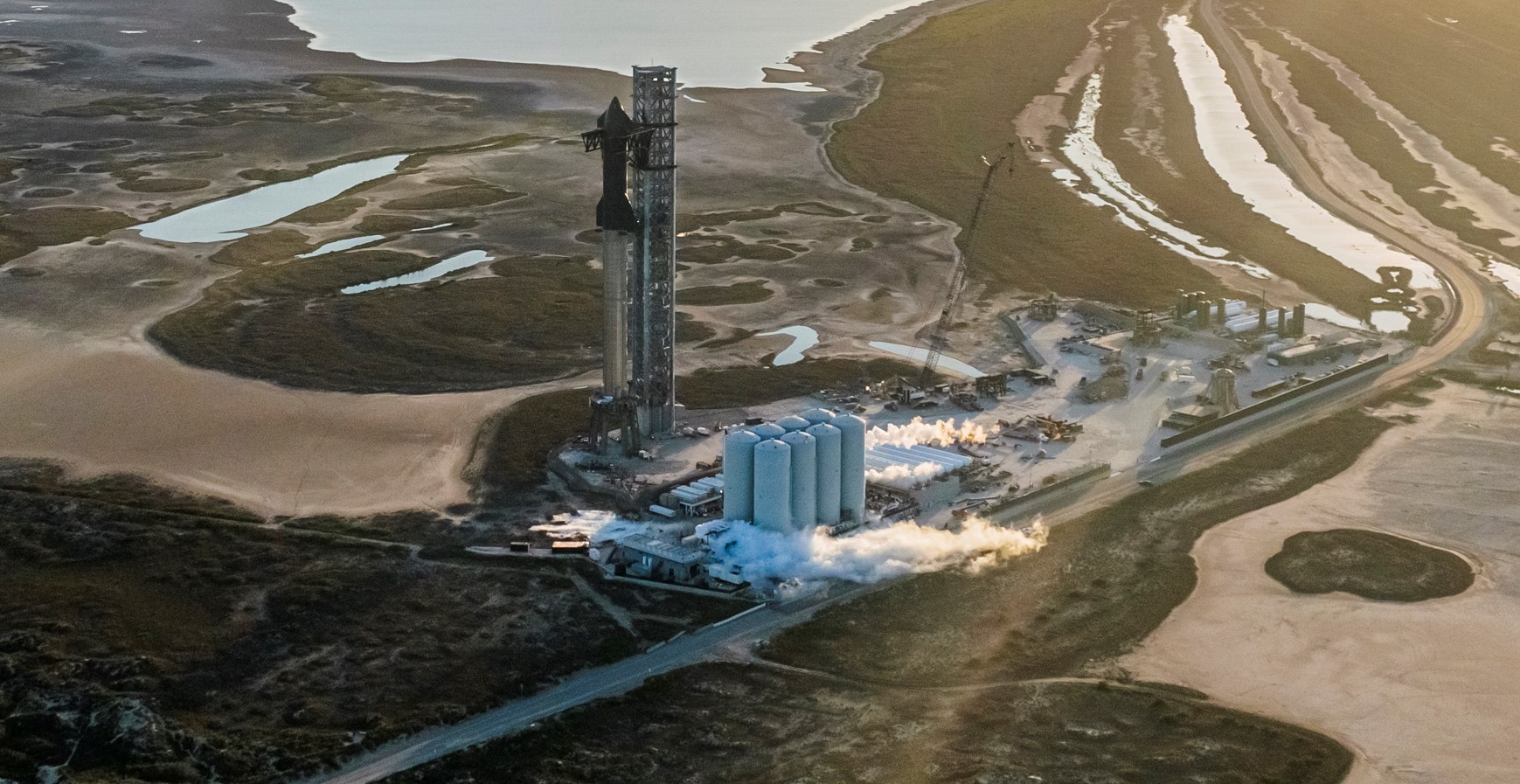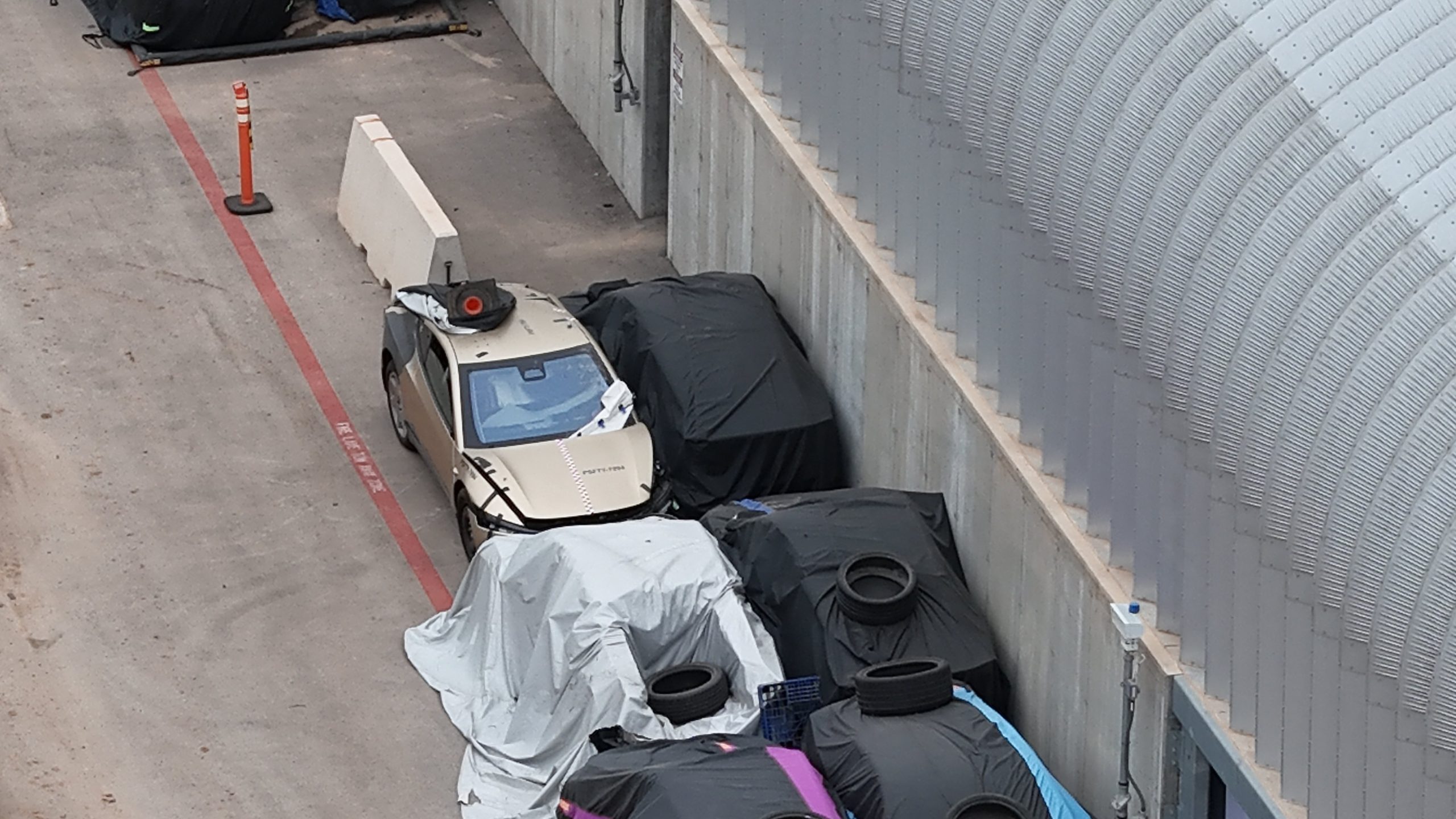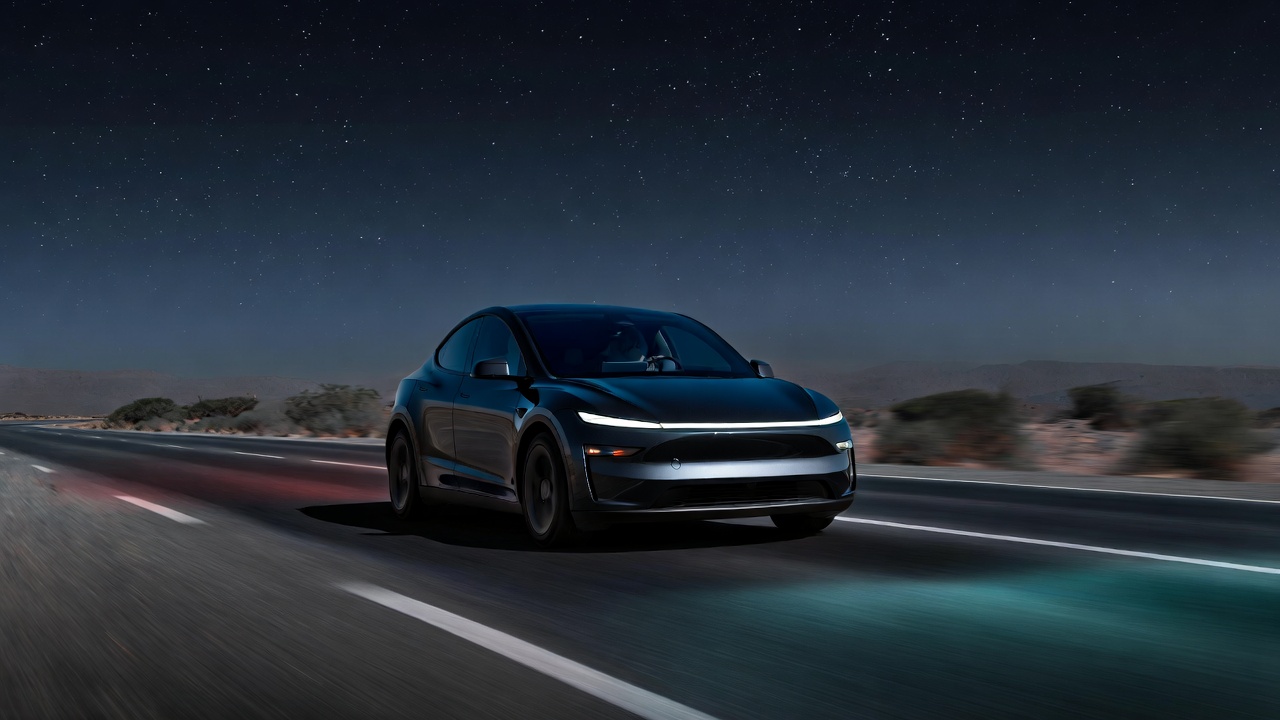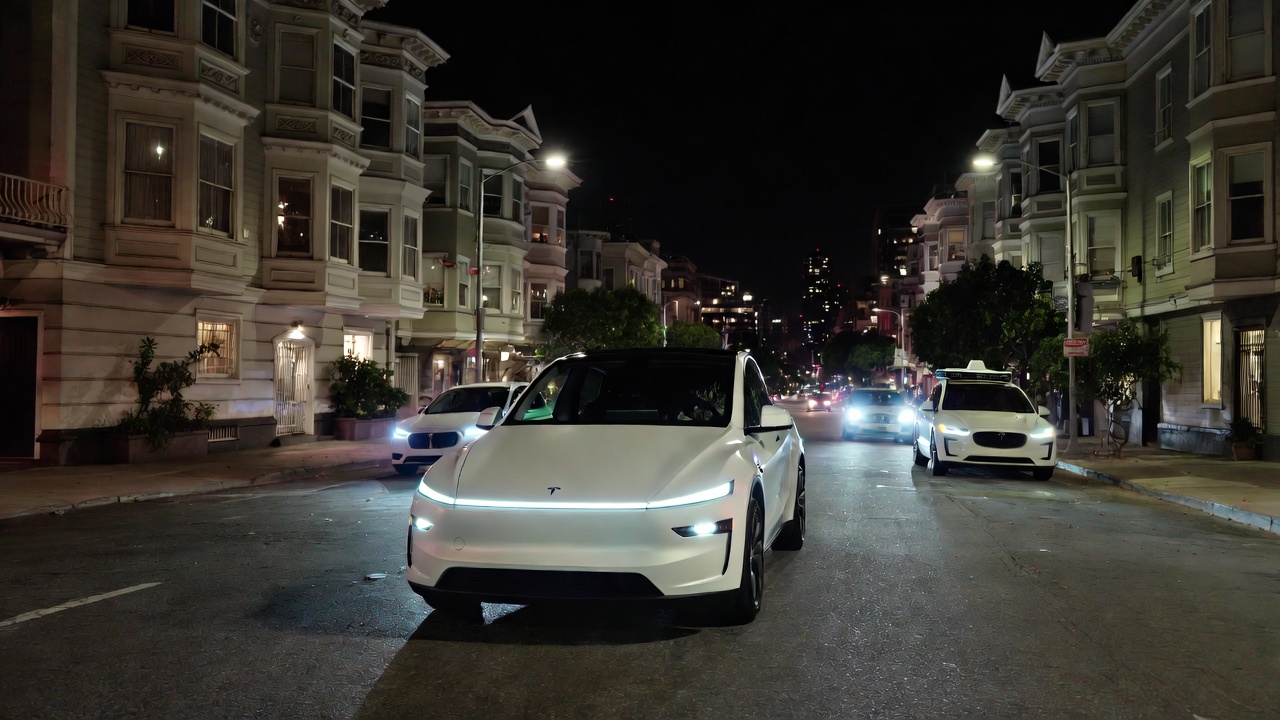

News
SpaceX’s Starbase environmental review suffers third delay
The Federal Aviation Administration (FAA) has announced that the completion of a crucial ‘environmental assessment’ SpaceX needs to begin orbital-class Starship launch attempts out of South Texas has been delayed for the third time.
Official known as a programmatic environmental assessment or PEA, the FAA says it started the process in late June 2021 with the goal of verifying that SpaceX’s Starbase orbital launch site (OLS) was mostly benign before the end of 2021. Compared to a regular EA, the programmatic nature of SpaceX’s Starbase review would theoretically allow the company to start small and gradually expand and add new facilities and capabilities without having to restart the arduous review process for each change.
Along those lines, SpaceX’s first draft PEA requested permission for no more than five full-stack Starship launches per year compared to the maximum of 12 Falcon 9 launches or nine Falcon 9 and three Falcon Heavy launches out of Boca Chica that SpaceX had already received permission for from the FAA in 2014.
Unfortunately, even at the time that the start of the process was announced, completing a full PEA in half a year was already unbelievably optimistic. No comparable review, of which there are effectively none, has been completed anywhere close to that quickly. In the face of substantial local opposition, like in the case of Georgia’s Camden Spaceport, even an FAA environmental review for a relatively small rocket launch facility can make little progress after years of tooth-and-nail fighting.
However, the best possible comparison has always been SpaceX’s own environmental assessment for an almost identical orbital-class Starship launch site at Florida’s Kennedy Space Center. Despite the fact that no untouched ground would be broken and even with the apparent might of NASA behind it, it took the FAA and SpaceX about a full year to complete a Pad 39A EA for up to 24 Starship launches per year. As such, the idea that the FAA would be able to complete a PEA for Boca Chica Starship launches in six months was always almost unimaginable.
It should come as no surprise, then, that nine months after SpaceX and the FAA began their Starbase PEA, they appear to be only marginally closer to completing the review. Days before the original December 31st, 2021 deadline, the FAA announced a delay to February 28th, 2022. On February 14th, the FAA announced a second delay to March 28th. Most recently, on March 25th, the FAA announced a third delay to April 29th.
Put simply, the FAA is effectively saying that it is actually further away from completing SpaceX’s South Texas Starship PEA than it was in December 2021. The extraordinarily opaque nature of the process also means that anyone outside of the loop or without internal sources is left to simply guess what is causing those delays or why the FAA keeps pushing the goalposts back just one or two months at a time when it’s unclear that anyone can actually predict when the process will be completed.
Without journalists filing Freedom of Information Act (FOIA) requests, the full extent of public knowledge about what is causing those delays would be the FAA’s scant few statements on the process. The most valuable information provided thus far is that the FAA is “reviewing the Final PEA,” which does seem to imply some degree of progress. Nonetheless, the agency still included a boilerplate statement noting that it’s “completing consultation and coordination with agencies at the local, State, and Federal level,” making it hard to actually say if any progress has been made. In February 2022, the FAA said it was “continuing consultation and coordination with other agencies.”
In December 2021, the FAA stated that it was “continuing consultation and coordination with other agencies at the local, State, and Federal level” while “SpaceX continues to prepare the Final PEA for…FAA review and acceptance.” By using such vague and unspecific language, the FAA makes what little it does say virtually impossible to parse and barely better than nothing. Solely thanks to documents secured through FOIA, we know that the FAA itself may not actually be to blame for most or all of the PEA’s four months of delays.
Instead, the US Department of the Interior (DOI), Fish and Wildlife Services (FWS), and National Park Services (NPS) may be partially responsible through their required coordination with the FAA, which they appear to be taking full advantage of to exert some form of control over the outcome. Bureaucrats are being bureaucratic, in other words.
Outside of email chains and boardrooms, however, it’s no longer clear that completing the PEA and securing an FAA launch license are the limiting factor for the first orbital Starship test flights. SpaceX CEO Elon Musk recently announced that SpaceX is changing the prototypes assigned to the first full-stack launch – likely to Booster 7 and Ship 24. Super Heavy B7 has yet to begin any kind of testing and Starship S24 is still in several pieces, so it’s safe to say that SpaceX’s new pair are months of concerted testing away from launch readiness.
If anything goes wrong during those tests, any significant design issues are discovered, or any damage is caused, it’s entirely possible that what Elon Musk says could take as few as two months will actually take more like four to six. Only time will tell. For now, the FAA likely has a few months before Starship’s South Texas PEA and full-stack launch license truly become the limiting factor for the rocket’s first orbital launch attempt.

News
Tesla is not sparing any expense in ensuring the Cybercab is safe
Images shared by the longtime watcher showed 16 Cybercab prototypes parked near Giga Texas’ dedicated crash test facility.

The Tesla Cybercab could very well be the safest taxi on the road when it is released and deployed for public use. This was, at least, hinted at by the intensive safety tests that Tesla seems to be putting the autonomous two-seater through at its Giga Texas crash test facility.
Intensive crash tests
As per recent images from longtime Giga Texas watcher and drone operator Joe Tegtmeyer, Tesla seems to be very busy crash testing Cybercab units. Images shared by the longtime watcher showed 16 Cybercab prototypes parked near Giga Texas’ dedicated crash test facility just before the holidays.
Tegtmeyer’s aerial photos showed the prototypes clustered outside the factory’s testing building. Some uncovered Cybercabs showed notable damage and one even had its airbags engaged. With Cybercab production expected to start in about 130 days, it appears that Tesla is very busy ensuring that its autonomous two-seater ends up becoming the safest taxi on public roads.
Prioritizing safety
With no human driver controls, the Cybercab demands exceptional active and passive safety systems to protect occupants in any scenario. Considering Tesla’s reputation, it is then understandable that the company seems to be sparing no expense in ensuring that the Cybercab is as safe as possible.
Tesla’s focus on safety was recently highlighted when the Cybertruck achieved a Top Safety Pick+ rating from the Insurance Institute for Highway Safety (IIHS). This was a notable victory for the Cybertruck as critics have long claimed that the vehicle will be one of, if not the, most unsafe truck on the road due to its appearance. The vehicle’s Top Safety Pick+ rating, if any, simply proved that Tesla never neglects to make its cars as safe as possible, and that definitely includes the Cybercab.
Elon Musk
Tesla’s Elon Musk gives timeframe for FSD’s release in UAE
Provided that Musk’s timeframe proves accurate, FSD would be able to start saturating the Middle East, starting with the UAE, next year.

Tesla CEO Elon Musk stated on Monday that Full Self-Driving (Supervised) could launch in the United Arab Emirates (UAE) as soon as January 2026.
Provided that Musk’s timeframe proves accurate, FSD would be able to start saturating the Middle East, starting with the UAE, next year.
Musk’s estimate
In a post on X, UAE-based political analyst Ahmed Sharif Al Amiri asked Musk when FSD would arrive in the country, quoting an earlier post where the CEO encouraged users to try out FSD for themselves. Musk responded directly to the analyst’s inquiry.
“Hopefully, next month,” Musk wrote. The exchange attracted a lot of attention, with numerous X users sharing their excitement at the idea of FSD being brought to a new country. FSD (Supervised), after all, would likely allow hands-off highway driving, urban navigation, and parking under driver oversight in traffic-heavy cities such as Dubai and Abu Dhabi.
Musk’s comments about FSD’s arrival in the UAE were posted following his visit to the Middle Eastern country. Over the weekend, images were shared online of Musk meeting with UAE Defense Minister, Deputy Prime Minister, and Dubai Crown Prince HH Sheikh Hamdan bin Mohammed. Musk also posted a supportive message about the country, posting “UAE rocks!” on X.
FSD recognition
FSD has been getting quite a lot of support from foreign media outlets. FSD (Supervised) earned high marks from Germany’s largest car magazine, Auto Bild, during a test in Berlin’s challenging urban environment. The demonstration highlighted the system’s ability to handle dense traffic, construction sites, pedestrian crossings, and narrow streets with smooth, confident decision-making.
Journalist Robin Hornig was particularly struck by FSD’s superior perception and tireless attention, stating: “Tesla FSD Supervised sees more than I do. It doesn’t get distracted and never gets tired. I like to think I’m a good driver, but I can’t match this system’s all-around vision. It’s at its best when both work together: my experience and the Tesla’s constant attention.” Only one intervention was needed when the system misread a route, showcasing its maturity while relying on vision-only sensors and over-the-air learning.
News
Tesla quietly flexes FSD’s reliability amid Waymo blackout in San Francisco
“Tesla Robotaxis were unaffected by the SF power outage,” Musk wrote in his post.

Tesla highlighted its Full Self-Driving (Supervised) system’s robustness this week by sharing dashcam footage of a vehicle in FSD navigating pitch-black San Francisco streets during the city’s widespread power outage.
While Waymo’s robotaxis stalled and caused traffic jams, Tesla’s vision-only approach kept operating seamlessly without remote intervention. Elon Musk amplified the clip, highlighting the contrast between the two systems.
Tesla FSD handles total darkness
The @Tesla_AI account posted a video from a Model Y operating on FSD during San Francisco’s blackout. As could be seen in the video, streetlights, traffic signals, and surrounding illumination were completely out, but the vehicle drove confidently and cautiously, just like a proficient human driver.
Musk reposted the clip, adding context to reports of Waymo vehicles struggling in the same conditions. “Tesla Robotaxis were unaffected by the SF power outage,” Musk wrote in his post.
Musk and the Tesla AI team’s posts highlight the idea that FSD operates a lot like any experienced human driver. Since the system does not rely on a variety of sensors and a complicated symphony of factors, vehicles could technically navigate challenging circumstances as they emerge. This definitely seemed to be the case in San Francisco.
Waymo’s blackout struggles
Waymo faced scrutiny after multiple self-driving Jaguar I-PACE taxis stopped functioning during the blackout, blocking lanes, causing traffic jams, and requiring manual retrieval. Videos shared during the power outage showed fleets of Waymo vehicles just stopping in the middle of the road, seemingly confused about what to do when the lights go out.
In a comment, Waymo stated that its vehicles treat nonfunctional signals as four-way stops, but “the sheer scale of the outage led to instances where vehicles remained stationary longer than usual to confirm the state of the affected intersections. This contributed to traffic friction during the height of the congestion.”
A company spokesperson also shared some thoughts about the incidents. “Yesterday’s power outage was a widespread event that caused gridlock across San Francisco, with non-functioning traffic signals and transit disruptions. While the failure of the utility infrastructure was significant, we are committed to ensuring our technology adjusts to traffic flow during such events,” the Waymo spokesperson stated, adding that it is “focused on rapidly integrating the lessons learned from this event, and are committed to earning and maintaining the trust of the communities we serve every day.”








